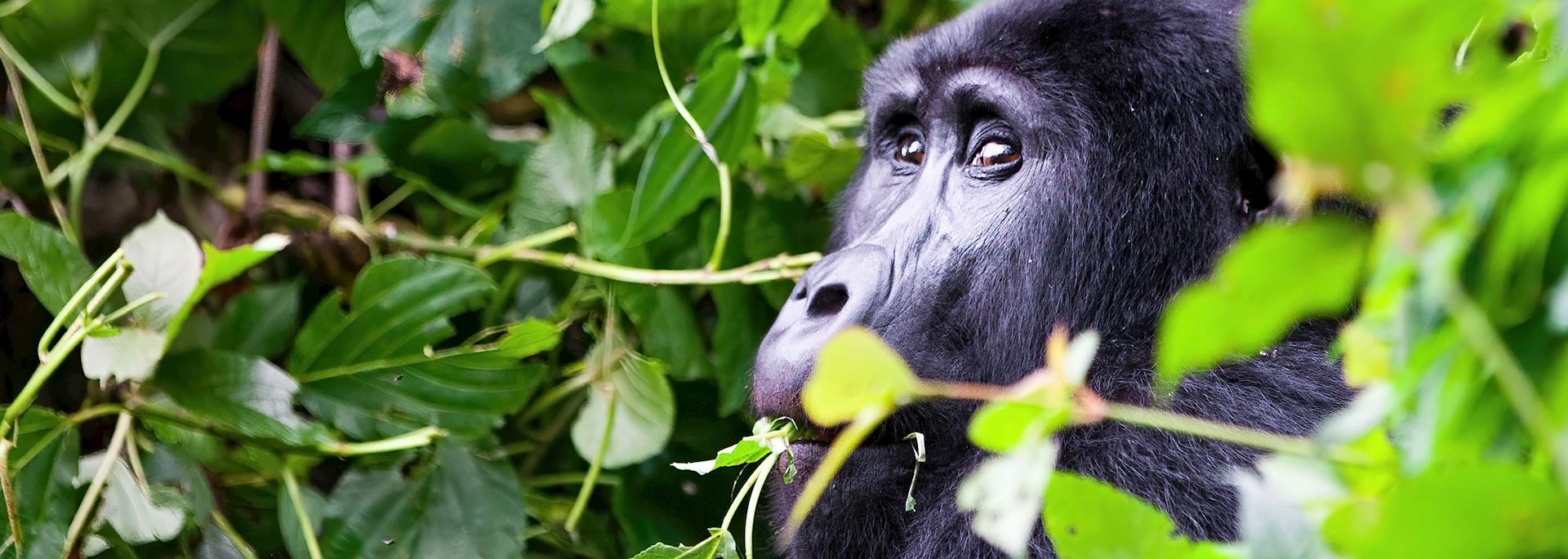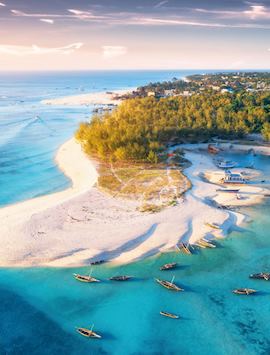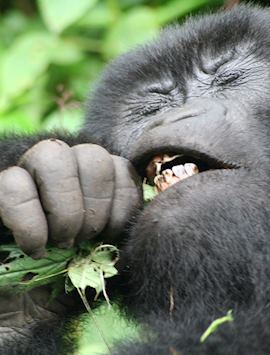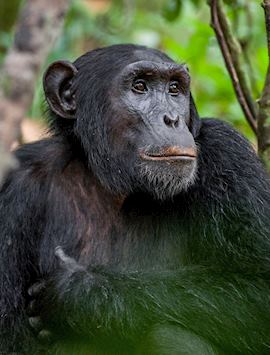There are only 700 mountain gorillas remaining on Earth. The majority live in the Virunga Mountains that straddle Rwanda, Uganda and the Democratic Republic of Congo, while a smaller number live in the Bwindi Impenetrable Forest of Uganda. Hunted and pushed out of their dwindling habitat, the montane forest is now heavily protected.
Most of the 700 gorillas live a wild existence, far from human reach. However, a handful of groups have been habituated and can be tracked and observed by small numbers of visitors under the watchful eyes of park scouts.
Gorilla tracking itinerary ideas
Start thinking about your experience. These itineraries are simply suggestions for how you could enjoy some of the same experiences as our specialists. They're just for inspiration, because your trip will be created around your particular tastes.
View All Tours in AfricaWhere to see gorillas in Rwanda
Rwanda is a much smaller country than Uganda, so lends itself better to a short trip in combination with a safari or beach stay elsewhere in East Africa.
The Volcanoes National Park is only two hours' drive on tarmac road from Kigali and the international airport. For one visit to the gorillas, you will need a minimum of two nights' stay, and three nights would be ideal.
Rwanda has more than twice the number of habituated mountain gorilla groups than Uganda and so permits are generally more easily available.
Rwanda gorilla groups
There are currently seven main groups that can be tracked in Rwanda; the Susa, Sabyinyo, Amahoro, Umubano, Hirwa, Kwitonda and Group Thirteen.
The groups vary in number from around 9 to 39 individuals and all currently have at least one silverback male. Of the seven groups, there are a couple that tend to be found on the saddle between Mount Sabyinyo and Mount Gahinga which is around a two-hour walk from the park entrance.
Whilst it is not possible to book a permit for a specific group, your chances of having a shorter walk are higher than in Uganda. Nothing is guaranteed though and you may find yourself tracking a group such as the Susa, first studied by Diane Fossey and often found on the slopes of Mount Visoke, a five-hour hike away.
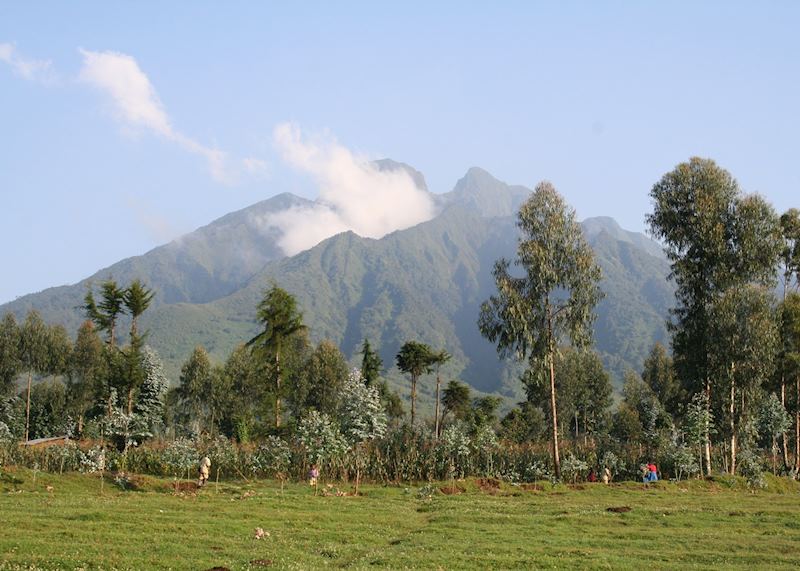
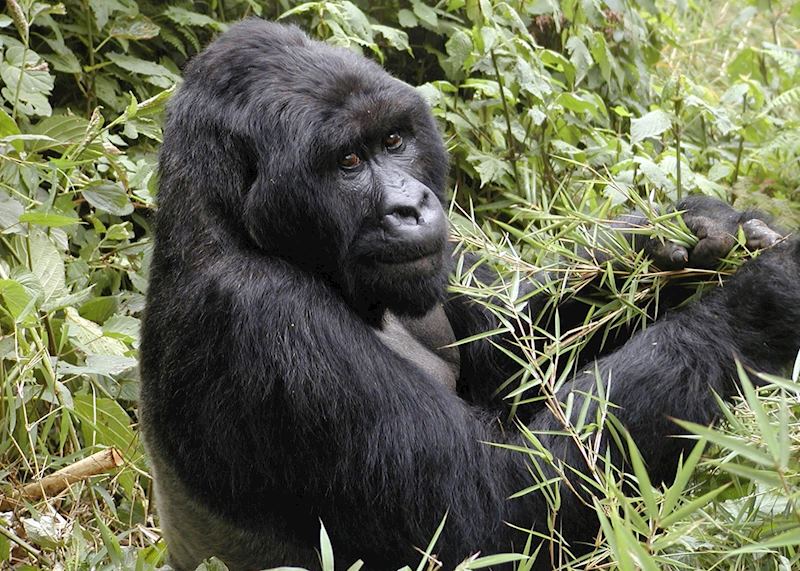
Where to stay in Volcanoes National Park, Rwanda

Gorilla Mountain View Lodge
Volcanoes National Park

Sabyinyo Silverback Lodge
Volcanoes National Park

Virunga Lodge
Volcanoes National Park
Where to see gorillas in Uganda
Uganda is a larger country to explore than Rwanda, and it takes two long days of driving to reach the Bwindi Impenetrable Forest from Entebbe, broken up with an overnight stay halfway at Lake Mburo.
Once at Bwindi we would recommend three nights before continuing your safari around Uganda.
Uganda gorilla groups
There are four habituated gorilla groups in Bwindi and none tend to be found near to the park entrance.
The groups are called the Mubare, Habinyanja, Rushegura and Nkuringo and range in size from 10 to 20 individuals, each with one or two silverbacks.
The terrain in Bwindi means that you sometimes start your trek at the top of the hills, descend on foot into the valley to see the gorillas, and then climb up the slopes at the end of the day, which can be more arduous.
In short, Uganda tends to be a harder option than Rwanda.
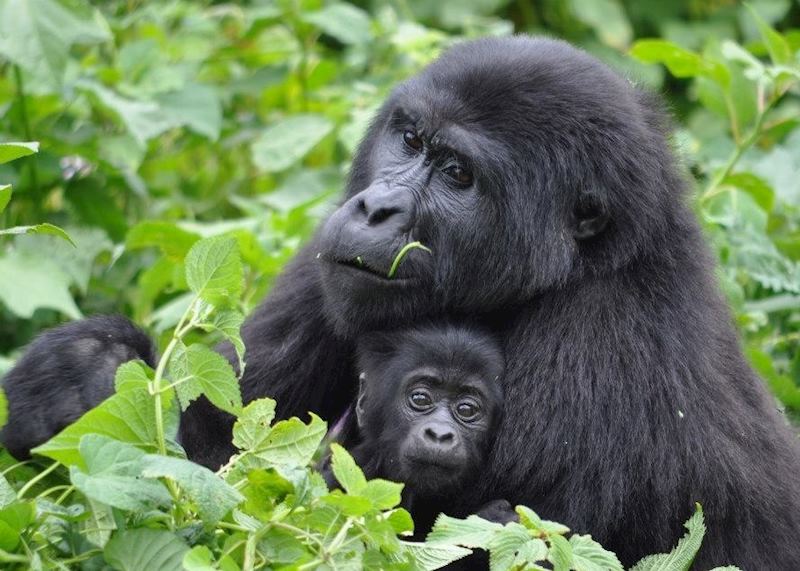
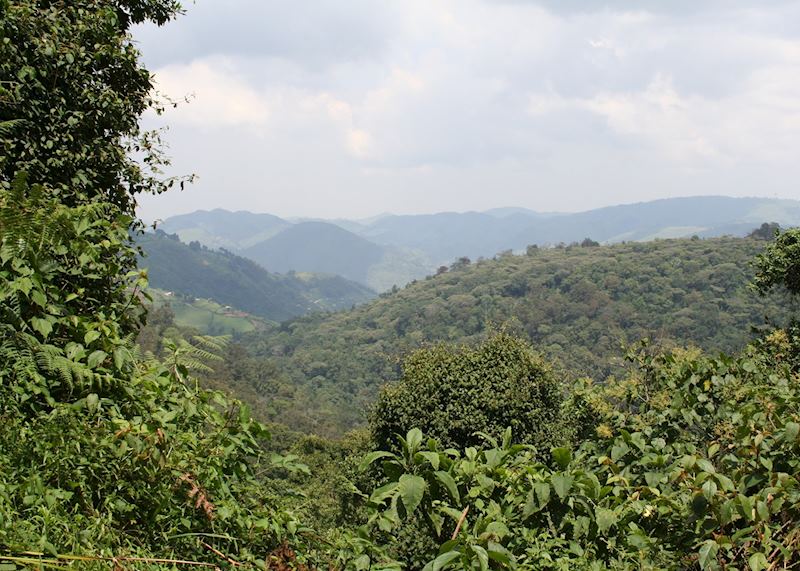

Bwindi Lodge
Bwindi Impenetrable Forest

Buhoma Lodge
Bwindi Impenetrable Forest

Clouds Mountain Gorilla Lodge
Bwindi Impenetrable Forest
Gorilla safari FAQs
Do I need to be fit to trek/find gorillas?
Gorillas live in montane forest, so treks to see them are at altitude and pass through varied vegetation and terrain.
You will need a reasonable level of fitness and a willingness to climb up muddy slopes and through thick growth.
What time of year should I try to visit the gorillas?
You can visit the gorillas year-round, and because of the rainforest climate, it can rain any day of the year, so there is not any time of year to particularly avoid travel here. April and May are the rainiest months, so most people avoid travel at these times.
Are you guaranteed to see gorillas when you set out?
It's not possible to 100% guarantee sightings of the mountain gorillas. However, we have never heard of an instance where a tourist group did not get to see a gorilla group during their trek. To help ensure this, trackers set off at dawn to locate the gorilla groups and radio their GPS coordinates to the park headquarters, so when you set off on your trek with your guide, you know where you are headed. The trackers stay with the gorillas even if they are moving.
What sort of clothing should I wear?
When setting out you should expect to get muddy and rained on, so a waterproof jacket is essential.
The exertion will keep you warm, so layers are best. We have also found it a good idea to wear long trousers to protect your legs against nettles, and a T-shirt with a long-sleeved shirt over the top.
A waterproofed daypack is essential for your camera, water bottle and snacks. For a small fee, porters can be hired to carry your daypack and help you up the steeper slopes.
Is there a minimum or maximum age to visit the gorillas?
Yes, you must be at least 16 years old and there's no flexibility to this rule. This is the same for both Rwanda and Uganda and it's enforced by the national parks. There is no upper age limit.
Will I need a permit?
Yes, permits must be obtained to visit the gorillas and, as only eight are granted per gorilla group each day, they are extremely limited.
We will secure permits for you as far in advance as possible and at least four months before you intend to travel. The permits currently cost around US$500 per person, which entitles you to one hour with the mountain gorillas.
This money goes toward conservation of the habitat, anti-poaching efforts and education of the local communities.
Will this be covered by my travel insurance?
It's definitely worth checking that your travel insurance does cover you for gorilla trekking as they may require an additional premium to be paid.
